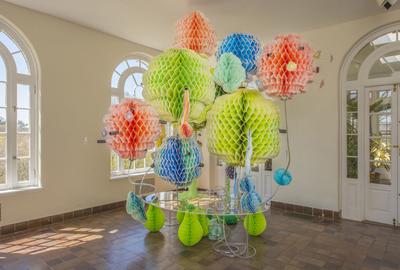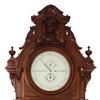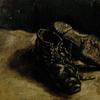FROM ARCHAIC BRONZES TO RARE CERAMICS- CHRISTIE’S PRESENTS FINE CHINESE CERAMICS AND WORKS OF ART IN SEPTEMBER
- NEW YORK, New York
- /
- September 11, 2012
On September 13-14, Christie’s New York will present Fine Chinese Ceramics and Works of Art, comprising over 500 lots and featuring a broad range of art and objects—jade, porcelain, ceramics, snuff bottles, and archaic and later bronzes. Highlighting the sale is a superb green jade brush pot, Qianlong period (1736-1795), (estimate: $500,000-800,000), masterfully carved with a scene of the Six Scholars of Zhuxi that elegantly unfolds around the brush pot like a scroll painting. The spectacular brush pot was formerly in the collection of the eminent collector, Heber R. Bishop (1840-1902), whose treasured jades now form the cornerstone of The Metropolitan Museum of Art’s collection. With estimates ranging from $5,000 to $800,000, the sale is expected to realize over $15 million.
A Very Rare And Important Large Archaic Bronze Ritual Wine Vessel, Zun
Late Shang dynasty, 12th- 11th century BC
Estimate: $600,000-800,000
This magnificent bronze vessel was once in the collection of Count Inoue Kaoru (1836-1915), an influential figure in Japanese history who amassed one of the largest collections of artworks during the Meiji period. He had a pronounced passion for tea ceremony objects and ancient Chinese bronzes, such as the present magnificent zun. One of the most remarkable characteristics of this exceptional zun is its unusually broad proportions, which endow the vessel with an impressive sense of weight and monumentality. Another notable feature is the image of a turtle centered by a coiled dragon and encircled by two dragons biting each other’s tail which is cast on the base of the interior.
A Rare Massive Blue And White Fish Jar
Jiajing Six-Character Mark In Underglaze Blue In A Line And Of The Period (1522-1566)
Estimate: $200,000-300,000
The heavily potted jar is boldly decorated in bright cobalt blue with two powerful five-clawed imperial dragons chasing a flaming pearl in a lotus pond. The imagery is exceedingly rare, as dragons are most often shown amongst clouds or waves. Another notable feature is the large size of the jar, measuring 27 inches in diameter. Jars of this size and weight were especially difficult to manufacture and would require up to nine days to fire. The grandeur of this jar and the choice of decorative motifs suggests that it may be been a special imperial commission.
A Rare Celadon-Glazed Pomegranate-Form Vase
Qianlong Seal Mark In Underglaze Blue And Of The Period (1736-1795)
Estimate: $40,000-60,000
Finely potted and covered in a lustrous sea-green glaze, the pomegranate-form vase comes from a private Hawaii collection, formed in the 1970s and 1980s. The collection includes numerous jade carvings, Qing dynasty porcelains, and a carefully selected ceramics from the Song- Qing dynasties. Of the works dating to the Qing period, perhaps the most coveted piece is a celadon-glazed pomegranate-form vase bearing the seal mark of the Qianlong Emperor (r. 1736-1795). Fruits and flowers served as inspiration to the Qing dynasty potters, with elegant natural shapes translated into porcelain and the designs harboring hidden meaning. The pomegranate is a pun on the character of zi, which means “seed” or “offspring,” and thus conveys a wish for many children.
A Rare Peachbloom-Type Baluster Vase, Meiping
Yongzheng Six-Character Mark In Underglaze Blue Within Double-Circles And Of The Period (1723-1735)
Estimate: $70,000-90,000
Like other business tycoons turned art collectors in the late nineteenth century, H.O. Havemeyer amassed a large collection of Asian art and ceramics, including 36 peachbloom-glazed porcelains, of which at least six are now in the Metropolitan Museum of Art. The sale includes two meiping exhibiting delicately mottled peachbloom-type glazes from this renowned collection (one of the two is illustrated left). The elegant profile of the meiping form, characterized by swelling shoulders and tapering body, is enhanced by the soft-crushed strawberry tone of the glaze which shades to pale green in areas.
A Rare Pair Of Famille Rose `Chicken' Dishes
Caihua Tang Zhi Four-Character Hall Marks In Underglaze Blue With Double Squares, Qianlong/Jiajing Period (1736-1820)
Estimate: $40,000-60,000
Property from the Collection of Peter H.B. Frelinghuysen, Jr., the pair of dishes is decorated in bright famille rose enamels with a scene of a cockerel standing on blue rockwork beside a hen. The design is based on the famous doucai ‘chicken cups’ of the Chenghua period (1465-1487), which were much celebrated even during their own day and copied from the late Ming through the Qing period.
A Finely Carved Pale Greenish-White Jade `Champion' Vase And Cover
Qianlong Period (1736-1795)
Estimate: $50,000-70,000
Also from the Heber R. Bishop Collection is a white jade `champion vase’ finely carved in the form of two tall cylinders that are joined by a phoenix with out-stretched wings standing on the head of a recumbent, winged mythical beast. The vase is fitted with a double cover surmounted by a bold crouching dragon.




10270x400_c.jpg)










100x100_c.jpg)



![Peter Paul Rubens (Flemish, 1577–1640), After Titian (Tiziano Vecelli) (Italian [Venetian], c. 1488–1576), Rape of Europa, 1628–29. Oil on canvas, 71 7/8 x 79 3/8 in. Peter Paul Rubens (Flemish, 1577–1640), After Titian (Tiziano Vecelli) (Italian [Venetian], c. 1488–1576), Rape of Europa, 1628–29. Oil on canvas, 71 7/8 x 79 3/8 in.](/images/c/e2/2e/Jan20_Rape_of_Europa100x100_c.jpg)


